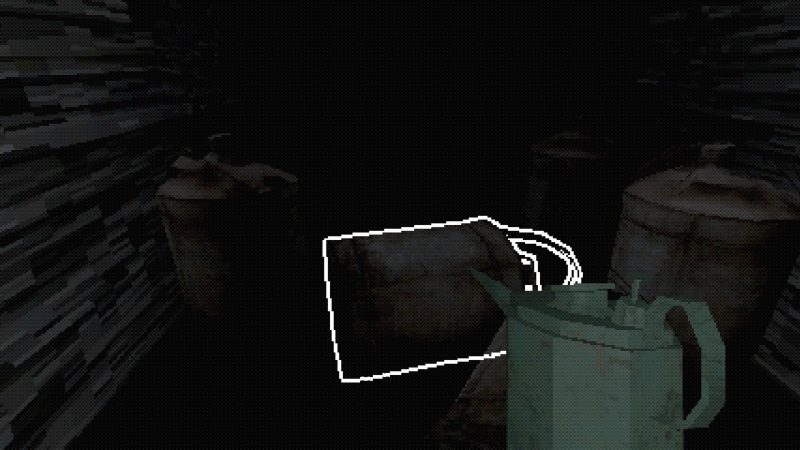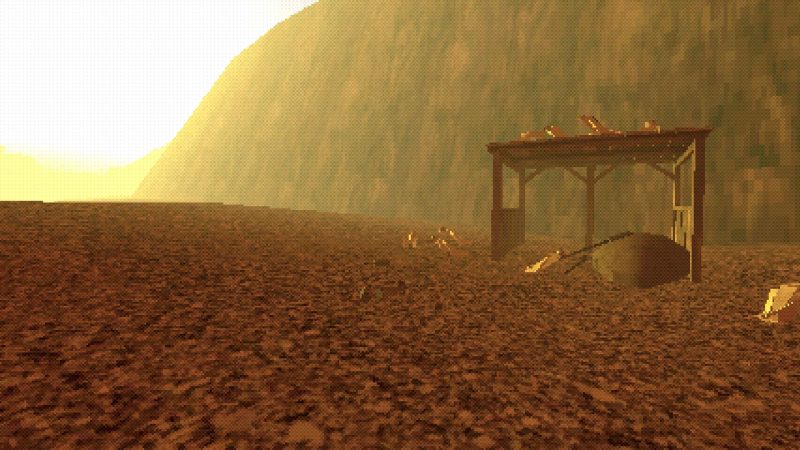No One Lives Under The Lighthouse Review (PS5) – Lovecraftian content is practically a dime a dozen, each throwing its own take into the ring.
Self-publisher Marevo Collective puts together an idea that does a lot with very little in its title, No One Lives Under the Lighthouse. While it doesn’t create something entirely cohesive, it does put together some cool ideas.
No One Lives Under the Lighthouse Review (PS5) – Some Rather Cool Ideas Despite Dated Presentation
You are escorted out to an island off the coast to watch over the lighthouse. You were asked to do this job because the former lighthouse keeper disappeared without a trace.
All you’re directed to do is keep the light on at night and keep the lighthouse windows clean.
During your time on the island, you need to create a daily routine of filling the oil tray and cranking the gears to rotate the lighthouse light. However, that pursuit of routine is constantly hindered by new complications each day.
Some of these complications come from the weather, some from the equipment itself, but most come from something lurking almost perpetually out of sight.
With each passing day, these complications grow in severity. The immediate truths of what’s happening on the island never completely show themselves, but the hints come in chunks.
What convolutes the delivery is how your perspective changes in the later days of the week, jumping from different locations to even different times.
The entire experience is compelling for that reason, jumping around with very little direction apart from the tidbits you see along the way.
Simplistic Methodology
Putting everything together is the tricky part. My second playthrough gave me much more perspective on the entire thing, and I appreciate that I saw it through twice.
That doesn’t mean I wanted to play it twice – if not for the game crashing in its final scenes, I might not have been motivated to try it again.
Thankfully though the issues I faced have since been patched, but for a game with multiple endings meant to entice replays, it wasn’t the best feeling that I felt more or less uninspired to seek out the other endings.
The multiple endings go a long way to expanding the premise, but the game leaves it all to you to go after.
The easiest visual comparison to this game is Minecraft, combining blocky aesthetic with more specific textures on everything. In this case, though, the game looks far more sophisticated than just a bunch of blocks.
While most structures and objects are naturally blocky, anything that’s rounded is actually round. Even equipment management works like Minecraft, but you use the D-Pad to swap between your items.
There is a little bit of gunplay in this game but not much. Equally so, firing the gun is a rather cumbersome affair.
It takes some animation time to lift the gun to your eye, and you don’t get a visual of how many remaining bullets are in your pocket. Like everything else in the game, you keep track of everything on your own.
This is where the comparisons to Minecraft end. For one, there’s no heads-up display of any kind. That said, if you want to check your ammo, you pull the ammo holder out of your pocket.
Fade to Black
Then, interacting with most objects creates a fade out and fade in effect, with the interaction change appearing after the fade in. At the beginning of the game, these changes are immediately in front of you.
Later on, though, the changes appear elsewhere, with little hints indicating that something changed outside of your surroundings.
Initially, this fade effect feels a bit cheap, especially when combined with the simplistic PS1 visuals. However, the longer you play, the more mystery that forms with each fade effect.
It no longer feels like a cheap transition. Instead, it becomes more like a brief loss of consciousness as the world changes around you.
This is a rather effective artistic choice if you go all in on the effect, which also plays into the overall premise well. In fact, that’s the general consensus for the game as whole: Some things are immediate and in your face, but the deeper whys are all up to you to brainstorm.
This game is about losing control, and all aspects of the game align with that perspective, including the visuals.
Perspective Change
If you don’t buy into what the game wants to do, you won’t enjoy the game. This game wasn’t created to routinely entertain the player.
To contradict myself, the gameplay itself is inherently straightforward and easy to command. The game offers no guidance or tutorials, but it also asks very little of you in order to do what needs doing.
The vast majority of the game is exploring and interacting, with the occasional action sequence.
Equally so, the game asks you to move around the island in search of changes along the way all with zero direction. Doing so creates a great deal of down time with very little happening.
The balance between input and payoff isn’t anywhere close to even. On this front, it’s a love-it-or-hate-it sort of thing: If you’re into it, you will eat it up. If it feels like work, you won’t stick with it for long.
If you’re oblivious like me, it might take a second playthrough to see what’s truly going on. All in all, hindsight benefits this game a great deal.
At the same time, the ambiguity when approaching the game blind brings its own sense of compulsion and curiosity if it strikes you. Lovecraftian fans, you know you’ll get something out of it.
The only frustrating part of gameplay is one particular set of very short action sequences. When something chases you, the perspective goes straight to your pursuer, and your controls change to something similar to tank controls.
The first attempt at escaping sees you practically run into your pursuer.
Thankfully, the game puts you in the same spot right before the sequence starts, so losses are slim to none. While these events take away from the flow of the game, these events don’t hinder progress for long.
Either way, they still hinder progress. Considering the game is so brief, these sequences affect a greater ratio of game time.
Something Definitely Lives Under The Lighthouse
To interesting effect, No One Lives Under The Lighthouse combines a sense of realism in movement with a dated, simplistic look. The puzzle pieces the game delivers don’t always make sense to the bigger picture, even at the end of the game.
Either way, the loss of control takes the forefront, putting you in precarious situations along the way.
Nothing is inherently wrong with No One Lives Under The Lighthouse, apart from somewhat cumbersome action sequences.
Equally so, it’s not for everyone. Fans of Lovecraft already know if they’ll like this. If you’re on the fence, I still recommend giving it a try, even if it ends up not being to your liking.
It’s still an interesting take on horror and suspense that lets you build the and discover the tension yourself.
No One Lives Under The Lighthouse is now available on PS5 and PS4.
Review code kindly provided by the publisher.





